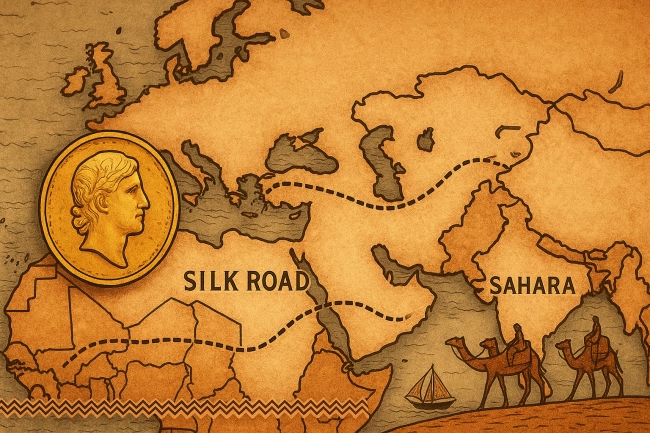Global Gold: How the Yellow Metal Connected Civilizations
Gold has done more than decorate crowns — it has connected empires, shaped global trade, and fueled both cooperation and conquest. Long before banks and borders, gold linked people across the ancient world.
Gold: The World’s First Universal Currency
Gold was the original global currency. Its scarcity, beauty, and resistance to decay made it perfect for trade.
-
Used in Mesopotamia, Egypt, and the Indus Valley as early as 2500 BCE
-
Represented wealth, stability, and divine favor
-
Circulated across borders, even without common language or law
Gold’s early circulation helped form the foundations of international commerce.
Trade Routes Fueled by Gold
The Silk Road and Roman-Asian Exchange
Gold was central to trade routes linking East and West.
-
Roman gold coins reached as far as Korea and Vietnam
-
Rome traded gold for luxury goods: silk, spices, jade, ceramics
-
Han and Tang dynasties used gold for elite gifting and diplomacy
Gold became a medium of cross-cultural exchange, not just currency.
Africa’s Gold Empires and Islamic Trade
Mansa Musa and West Africa’s Wealth
In West Africa, gold meant empire.
-
The Mali Empire was one of the world’s richest civilizations
-
Mansa Musa’s 1324 pilgrimage to Mecca spread gold so widely it caused inflation
Via Trans-Saharan routes, gold reached:
-
Islamic markets in Fez, Cairo, and Baghdad
-
European merchants via North African ports
This wealth funded:
-
Universities in Timbuktu
-
Mosques and libraries across North Africa
-
Trade in horses, salt, textiles, and manuscripts
Gold and Colonial Expansion
Aztec & Inca Gold – And the Spanish Conquest
When conquistadors reached the Americas, they found:
-
Gold temples, masks, burial offerings
-
Civilizations where gold had religious and political meaning
Spain extracted tons of gold from Peru and Mexico, which:
-
Funded wars, colonization, and royal empires
-
Entered global markets via Seville, Antwerp, and Lisbon
-
Laid the groundwork for early capitalist expansion
The Legacy: Gold Still Connects the World
Gold is more than metal — it’s a symbol of power and trust, a link across cultures.
-
In today’s financial systems, gold still serves as a reserve asset
-
Central banks and investors worldwide turn to gold in times of uncertainty
-
Gold remains an anchor amid digital finance and fiat volatility
Conclusion
Gold has quietly shaped the world for millennia. As trade routes, empires, and ideologies rose and fell, gold remained a constant — flowing across deserts, mountains, and oceans, connecting civilizations long before globalization had a name.
⚠️ Disclaimer
This article is for informational and educational purposes only. It does not constitute financial advice.

